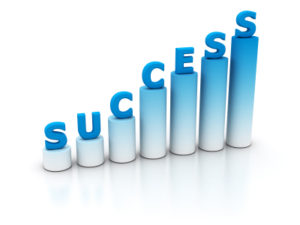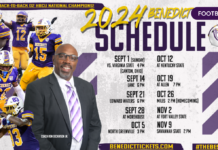
by: Paul Lemberg
When people are seeking business coaching (you can find out more here about business coaching) they often have one question in mind: how can you get more done?
Can you really do more than you already do? Is there still room left on your plate for even one more thing? The truth is I don’t know anyone (successful) who has too little to do. Not one of my many clients–nor any of my friends, acquaintances, or people I meet on planes–none of them has ever said they have too little to do.
Doing more to get more done is simply not an option.
The answer to doing more is doing less.
Less?
Do less?
Are you kidding? How’s that going to help? “I don’t get enough done as it is,” you say, “and there’s always more to do at the end of a day!”
Ask this transformational question: Is each activity you currently do providing the greatest possible payback? Or like many people, are you spending much of your precious time doing things which produce a relatively lower return? The key word is relatively.
To do more, you’ve got to figure out what not to do.
For most people, 100% of our time is filled with 1) routine day-to-day matters, 2) things we told other people we would do and 3) responding to (sometimes trivial) interruptions. To try to make something important happen, we end up shoving that thing into our schedule.
How well does that work? How well does a five pound bag hold ten pounds of stuff? You get the idea–not very well at all. And, of course, all the important stuff ends up spilling out onto the floor.
For some people, the bag is so full–there are so many to-dos on your to-do list, your reach the uncomfortable state of overwhelm. Your creativity gets totally locked out and your mind can’t even consider other, perhaps more important things.
You’ve got to figure out what not to do.
I’ve done casual research on this subject asking audiences of executives what things they do that they know they shouldn’t. This list of guilty pleasures includes answering emails as they come in throughout the day, handling the company finances, interviewing all candidates for all jobs, purchasing, filing, writing marketing copy and advertisements, signing all the checks, exercising final say on small product changes, and so on.
That’s not to say these things aren’t important–some are, even vitally so. The question is–are these the most important things for YOU to be doing, especially at this point in your organization’s development?
Often when I ask these questions, people respond by saying there is no one else who can do THAT as well as they can.
This thinking is typical of what Adam Smith called “absolute advantage.” Smith advocated doing all the things which you do better than anyone else. It is obvious, commonsense thinking. The trap for someone who is by nature highly and broadly capable is that you can end up doing everything, reluctant to let go of anything.
To the rescue is 19TH century economist David Ricardo’s Law of the Comparative Advantage of Nations. In a bold, counterintuitive bit of reasoning, Ricardo said to maximize wealth, each country should devote its energy to producing goods they sacrificed the least to create. In other words, Comparative Advantage says to produce the goods which create the highest value per unit of work. Everything else, regardless of how much better you do it than anyone else, should be done by others.
Assume your company makes a sophisticated high value product and you can sell as many as you can make. The product uses several cheap components, which by the way, you can also make better and cheaper than anyone else. Ricardo says that given limited resources (your time, for instance) it is a mistake to manufacture any of the components; each unit of time spent making the cheaper components instead of making the high-valued product costs you money –opportunity cost. To make the most profit, spend ALL your time making the high-value product, and purchase the components.
Ricardo’s law boils down to this: do the thing which brings the GREATEST RETURN–and nothing else. That which brings you the greatest value, and only that, is your comparative advantage.
Keep a list of all the separate things you do during the course of a day/week/month. You may think you know, but each time I ask an executive to try this exercise, they are surprised by the outcome.
Make a notation of what you are doing every 15 minutes. Keep this record for as long as you can–at least two or three days; a week or even two will reveal even more. (You must write this down. The process won’t work if you try to keep it in your head.)
What have you been doing? Have you been squandering your comparative advantage?
Is each action on your list HIGHLY PRODUCTIVE? Is each thing on your list MAKING YOU MONEY, or CHANGING THE WORLD (at least a little bit?)
No? Most people spend at least some of their time doing low-contribution activities. For most people, even if they consider what are doing important, there are usually even more important things they should do instead.
Once you’ve understood how you actually spend your time, you have three possible courses of action:
You can dump things–there are always some things which are of such little value that no one should be doing them.
You can delegate important things to capable people in your organization or outsource them to firms which specialize in those things.
Lastly, YOU can do the things which make the largest difference.
Apply Ricardo’s principle of comparative advantage. Figure out what specific actions contribute the most and do only those, offloading or dumping the rest. Do the same analysis for each department and each member of your company and create extraordinary results.
To do more–to get more done in terms of value–you have to do less.
(c) Copyright Paul Lemberg. All rights reserved
| About The Author
Paul Lemberg is the president of Quantum Growth Coaching, the world’s only fully systemized business coaching program guaranteed to help entrepreneurs rapidly create More Profits and More Life(tm). To get your copy of our free special report with detailed steps on how to grow your business at least 40% faster, even when you aren’t sure what to do next, go to http://www.fastergrowthnow.com. |











































